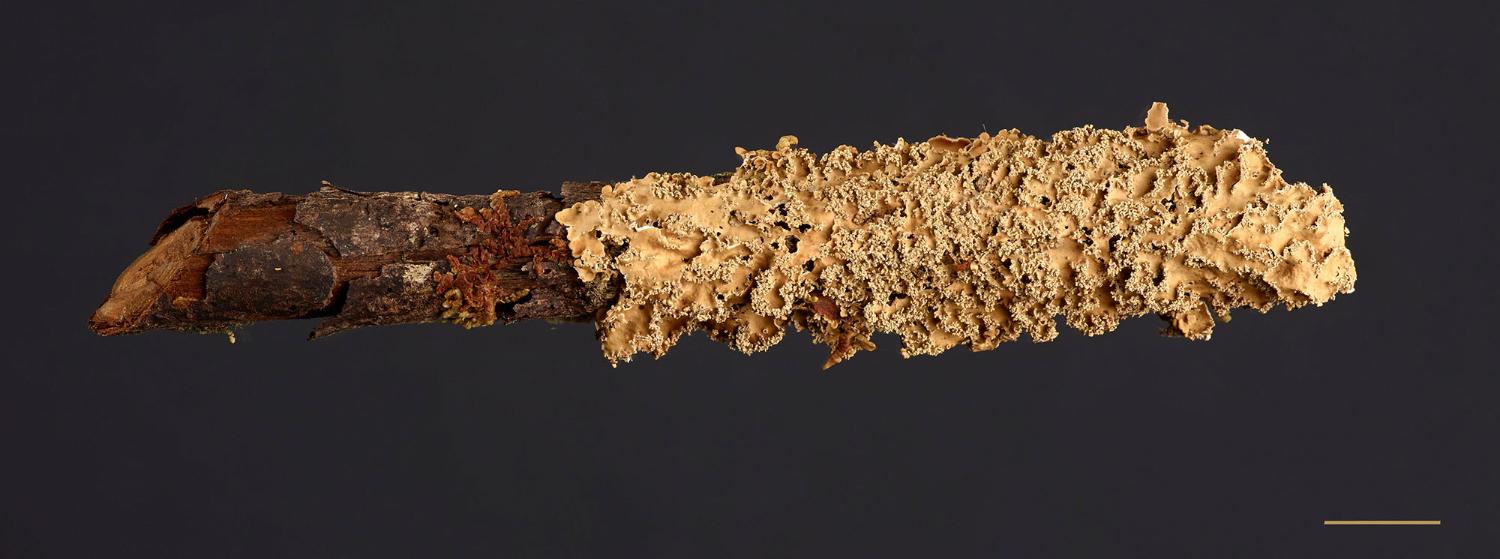Botany
 Foto: Mari Karlstad, Norges arktiske universitetsmusem
Foto: Mari Karlstad, Norges arktiske universitetsmusemBotanical and Mycological Collections at the Arctic University Museum of Norway (TROM)
The herbarium at the Arctic University Museum of Norway (TROM) has approximately 280 000 objects. Most of the accessions originate from North Norway and circumpolar boreal and Arctic regions. About 90% of the collections are already digitized and searchable via the Global Biodiversity Information Facility (GBIF) and The Norwegian Biodiversity Information Centre (NBIC) portals, as well as TROM’s own search portal. The herbarium TROM has collections of vascular plants, bryophytes, algae, lichens and fungi including c. 70 type specimens. In addition, there are smaller still unregistered collections e. g. seeds, pollen, other botanical objects and ethnobotany, as well as DNA samples. The c. 8 000 plant collections at Tromsø Arctic-Alpine Botanic Garden are included in a separate database.
TROM digital collections (updated 13.02.2025)
Galina Gusarova
Galina Gusarova
Galina Gusarova
Details from the collections below can be accessed at:
Artsdatabanken - Kunnskapsbank for naturmangfold
Vascular plants
The vascular plant herbarium at TROM houses about 200 000 specimens. The collection is arranged in four parts: Nordic, Arctic, ‘Other foreign’ and Garden plants. TROM is particularly rich in accessions from the North of Norwegian mainland. Among the Nordic collections, 80-85 % originate from North Norway, Troms og Finnmark and Nordland counties. Herbarium also contains valuable collections from other Nordic countries as well as the circum-arctic areas. The Arctic herbarium contains over 10 000 specimens from Svalbard, Bjørnøya, Greenland, arctic Russia, arctic Canada and Alaska.
Bryophytes
The bryophyte herbarium contains c. 23 600 specimens. About 80% of the material is from mainland Norway and Svalbard, remaining parts mostly from Sweden and Finland. Significant collections of the large genus Sphagnum are from the Trøndelag area, northern Norway and Svalbard. The Sphagnum material has recently been revised.
Algae
The Algal collection is represented by around 3 500 mounted specimens and additional 1500 boxed specimens. Most of the materials were collected during 1955-1980 mostly from North Norway and Tanzania, and mostly related to research activity of the algologist Erik Jåsund. There has been very little activity and expansion of this collection after this period except for the freshwater algae. During the spring of 2021, the GBIF-funded project will start with the goal of making algae collections computer-registered and available through the Collections Search Portal.
Lichens
The lichen herbarium contains c. 22 500 specimens. Much of the material is old and was collected in Northern Norway and from the Norwegian Arctic islands by J. M. Norman, Bernt Lynge and other botanists during the latter half of the 19th century and the early 20th century. The collection has increased during our own research activity during recent decades, with important additions from Southern Hemisphere areas, such as Chile, New Zealand, Australia, Bolivia, New Caledonia, Reunion, Bouvet Island and Antarctica . TROM may now have one of the world largest collections (c. 1 800 samples) of the Pannaria/Psoroma complex within the family Pannariaceae and has a number of type specimens.
Fungi
The mycology collections at the Norwegian Arctic University Museum includes c. 39 300 objects. About 90% of the accessions originate from the Norwegian mainland, mostly from Finnmark, Troms and Nordland counties. The foreign collections are mainly from neighboring countries. One third of collections consists of Ascomycota and there is a significant collections of Pyrenomycetes from Norway and other Nordic countries. Particularly the collection of corticolous and lignicolous Pyrenomycetes on Salix is good, and includes both Sordariomycetes and Dothideomycetes. In addition, the family Xylariaeae is represented with many specimens, particularly within the genera Hypoxylon and Nemania. The type collection of Pyrenomycetes s. lat. consist of 28 specimens.
Research visits, collection-based inquiries and loan requests can be made to the collection manager
See our policies and procedures, and our information for visitors